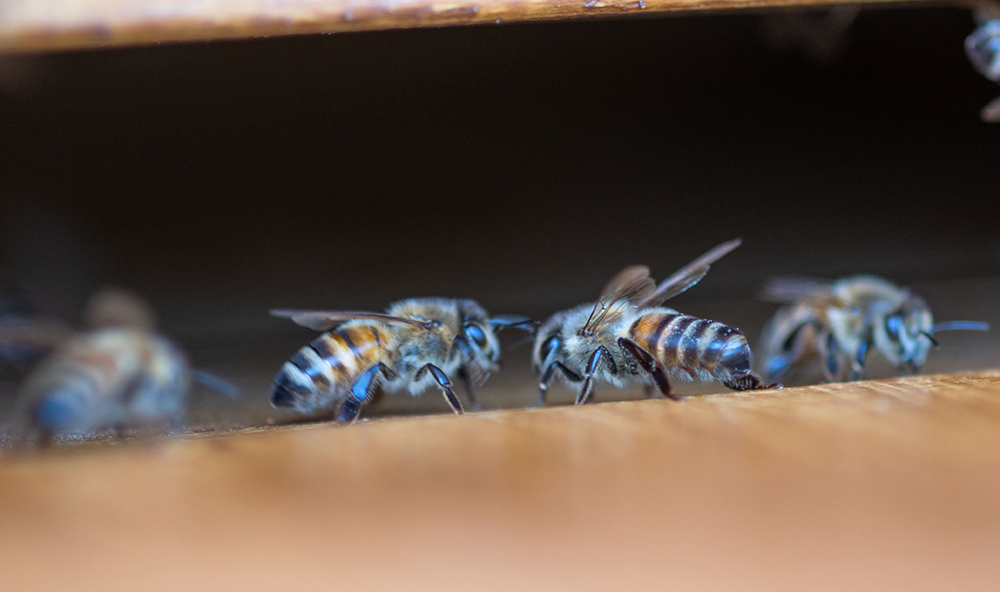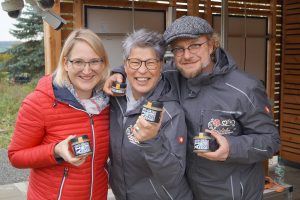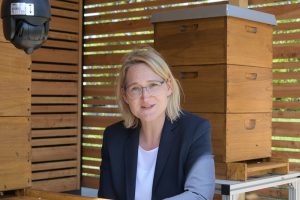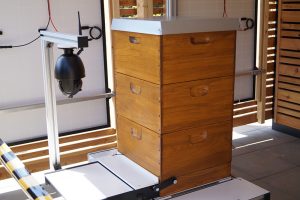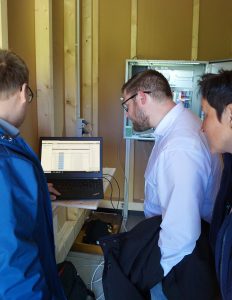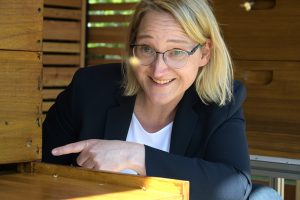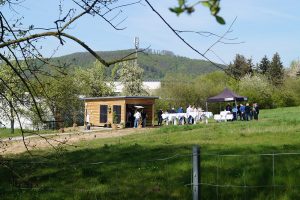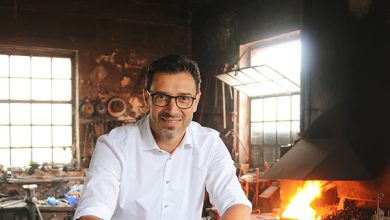The first bee summer at the Bad Pyrmont site is over. While the bees are already waiting for their first outing of the new year, the human makers of the PLCnext team are taking stock. Is the hoped-for transfer of knowledge from bee to human working?
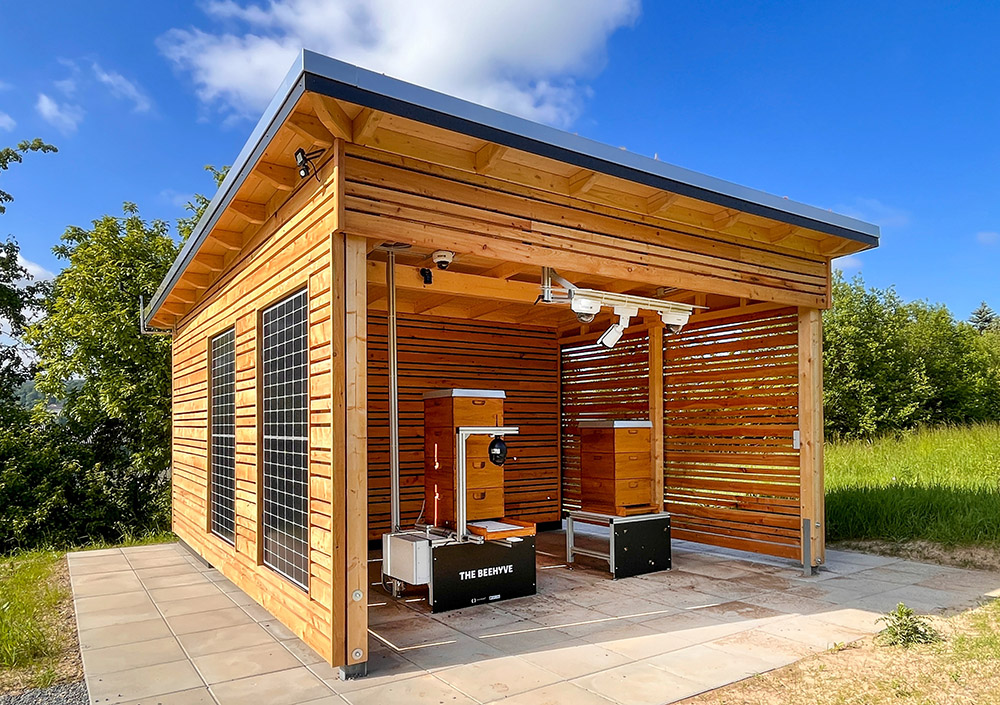
For the past six months, 100,000 new employees have been at work at Phoenix Contact: while the PLCnext Technology control system watches over them, two bee colonies above Phoenix Contact Electronics concentrate entirely on the production of honey. Behind this new collaboration on an animal level is the project “The Beehyve”.
It’s a matter of life and death at the small opening to the beehive: a wasp has found its way behind the guarded gate. It wants a share of the bees’ nutritious winter supply. But the guards don’t hesitate for long: they sting the unwanted intruder and transport the dying wasp back outside the hive – to the others that are already there.
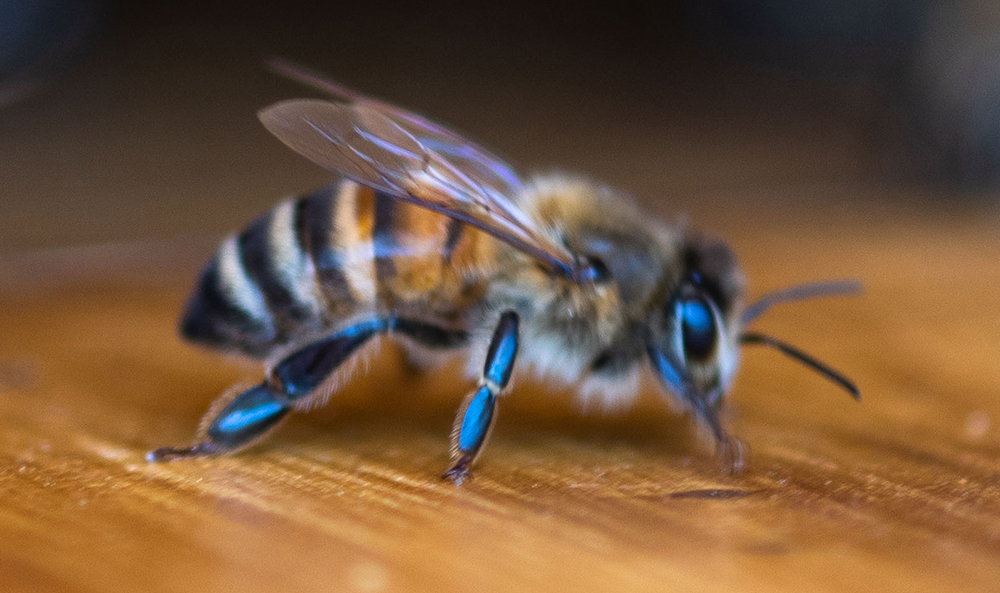
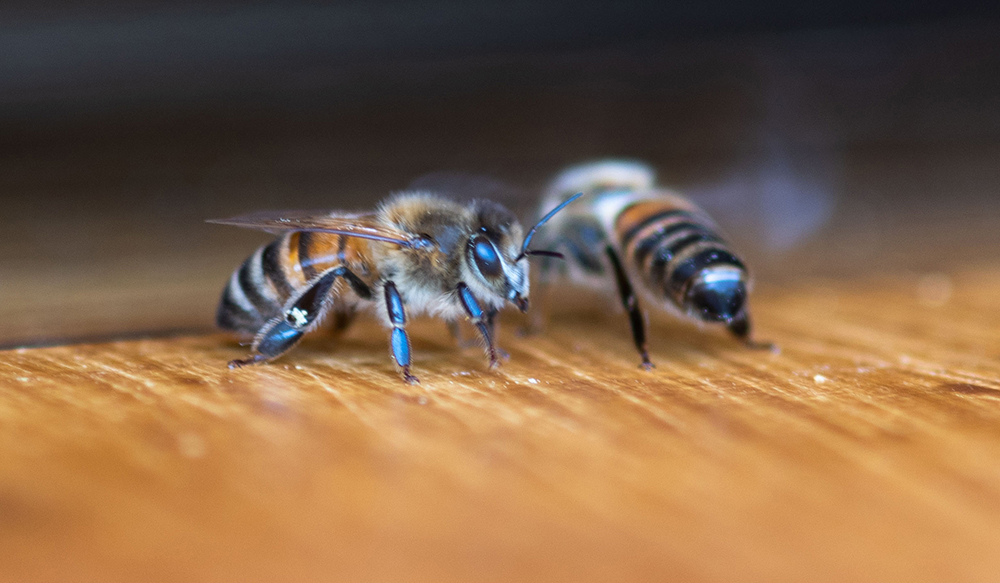
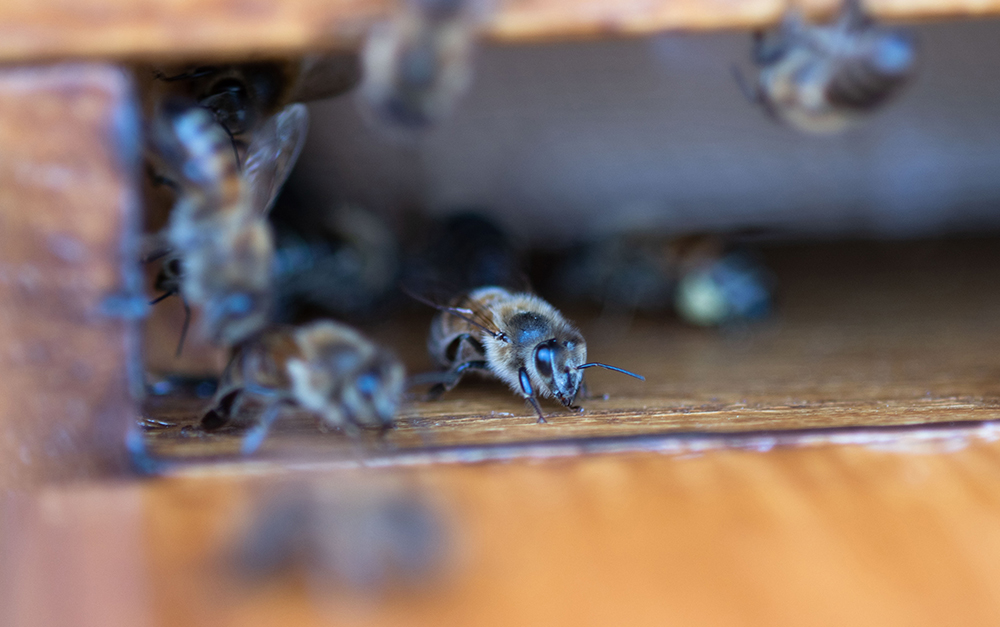
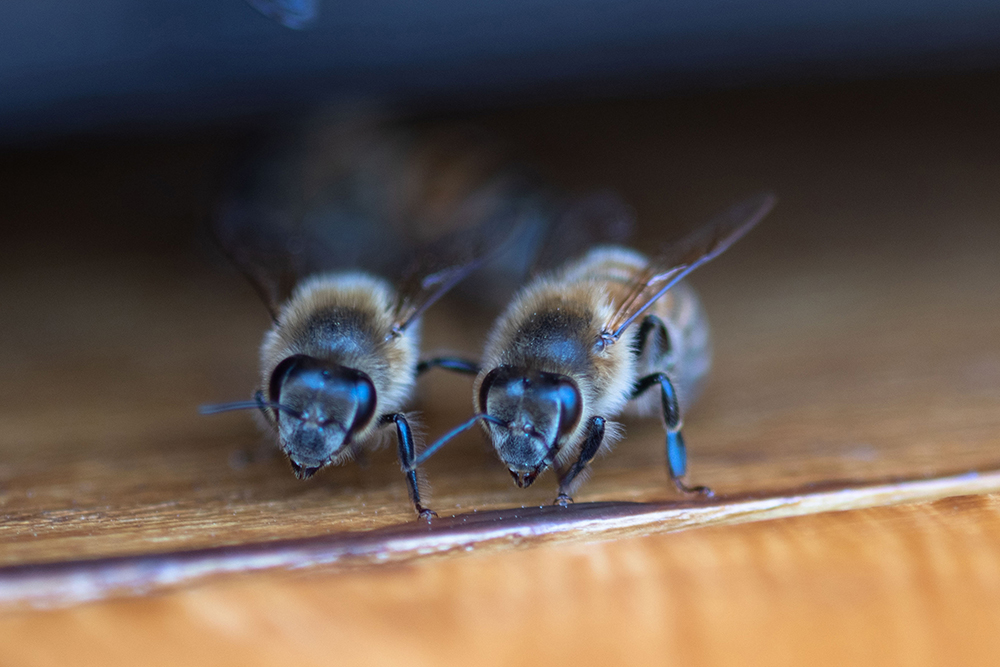
When visiting Building 50, as the two beehives above the Bad Pyrmont site have been affectionately christened, it quickly becomes clear how efficiently and rigorously the two bee colonies ensure their survival. They have been at home here since May. Since then, they have not only coped with attempted food theft by wasps, hornets or other bees, but also with the stress of their new environment, climatic challenges and the threat of the Varroa mite.
“They’ve done brilliantly, much better than initially assumed,” reports Katrin Kropp, beekeeper at Honigliebe Lippe. Together with her husband Oliver, the bee expert from the neighboring village of Dörentrup is responsible for a total of 76 bee colonies. The beekeeping couple are professional partners of “The Beehyve” project.
The aim of this project is not to get the electrical engineering company into food production. Rather, the marketing and communications team at PLCnext Technology wants to realize a creative implementation idea with the innovative PLCnext Control controller. The special highlight: The Beehyve project is not only being carried out by and at Phoenix Contact, but rather uses the swarm intelligence of the now globally active PLCnext community. Thanks to the open interfaces of the controller, industry experts from a wide range of different areas work together on projects and achieve faster and better results together, which are then available to the community as a whole.
Various sensors were connected to a PLCnext Control in one of the two beehives for the project. Iris Trinoga, project manager at “The Beehyve”, explains what data is collected: “We measure the weight of the hive. And we measure the exact temperature in the hive with twelve internal temperature sensors. Two external sensors monitor humidity and vibration. We also have several cameras connected, which we use not only to capture optical images of the entrance, for example, but also to take thermal images. The data is collected and flows into our Proficloud, where we have set up a special dashboard. “
From their workplace, the Beehyve team was able to observe how the bees came to terms with the technology. Six months after the start, it is clear how unexpectedly smoothly this went: “It’s amazing: the bees have tolerated the technology in the hive and have not let themselves be disturbed,” reports beekeeper Oliver Kropp. At first he had his doubts about how the animals would react to the technology and the radio waves. “But the yield and colony strength – which can be used to measure the health and satisfaction of a colony – clearly speak for themselves: the bees have settled in well here and come to terms with the technology.” As is usual with bees, everything unknown (such as the internal sensors) was coated with the bee’s own resin propolis and kept free of bacteria.
During the first honey harvest in mid-June, the “Frühtracht”, the beekeeping couple were able to extract 50 kilos of honey. This has now made it into jars – after an elaborate process of spinning, sieving and stirring umpteen times. The project team handed out the first jars “full of data and honey” at the SPS trade fair at the end of 2023. The data from the Beehyve project can be viewed directly by scanning the QR code on the jar. For example, the virtual model of the beehive with real-time data, the digital twin or the dashboard with all the bee data can be accessed. And of course, company patriarch Klaus Eisert, who is an enthusiastic beekeeper himself and came to the beehive christening in May, also received a jar of this first Phoenix Contact honey.
The Beehyve project itself came to an end at the end of 2023, but the collaboration on the two beehives will continue. Iris Trinoga and Katrin Kropp agree that the findings and yield of the first year have already been promising, but even more can be expected in 2024: “This year will be the first regular bee year in which the colonies can do their work without stress – i.e. without moving and adapting to the technology.” According to Iris Trinoga, it is already clear that much of what has to do with bees is also extremely relevant for the industry. “We have – quite simply – found a great deal of transferability.”
When asked for her conclusion, Katrin Kropp doesn’t have to think long: “As beekeepers, we have gained completely new insights into the technology. We found it very exciting what you can measure and see.” The dashboard is particularly useful now in winter. And: “I would love to equip every beehive with this technology.” The PLCnext Technology control system is no substitute for personal use on site. But it does help beekeepers to work more efficiently on looking after the bees and their health, for example when counting Varroa mites or drawing conclusions about impending swarm losses and newborn bees.
What will happen now? “There are still a few wishes left for 2024,” laughs Iris Trinoga. “The bees are here to stay.” For example, a project group wants to correlate data from the beehive with weather data and use this to create a flight forecast for bees. In future, farmers could use this to separate the timing of their fertilizer application from the bee flight. “We had already envisioned this for 2023. But we had too many special situations in the first summer, so we don’t yet have a valid database. Nevertheless, the group has continued and is already looking forward to the approaching spring and the new collaboration with the hard-working honey and data collectors.”
And the flowering meadow with the two beehives will also be permanent. There are plans to incorporate “Building 50” into the traditional factory tours and make the site a testing ground for other teams.
The two bee colonies themselves are quiet for seasonal reasons. They have hibernated and are clustered in the hive, warming themselves around the brood and their queen. Only about 5,000 bees will survive the winter. After the winter solstice, the queen bee will begin to lay new eggs so that up to 60,000 busy nectar collectors will be on the move again in summer, providing the honey makers above Phoenix Contact Electronics with a healthy sweet treat and valid data. (Jutta Neelmeier)
